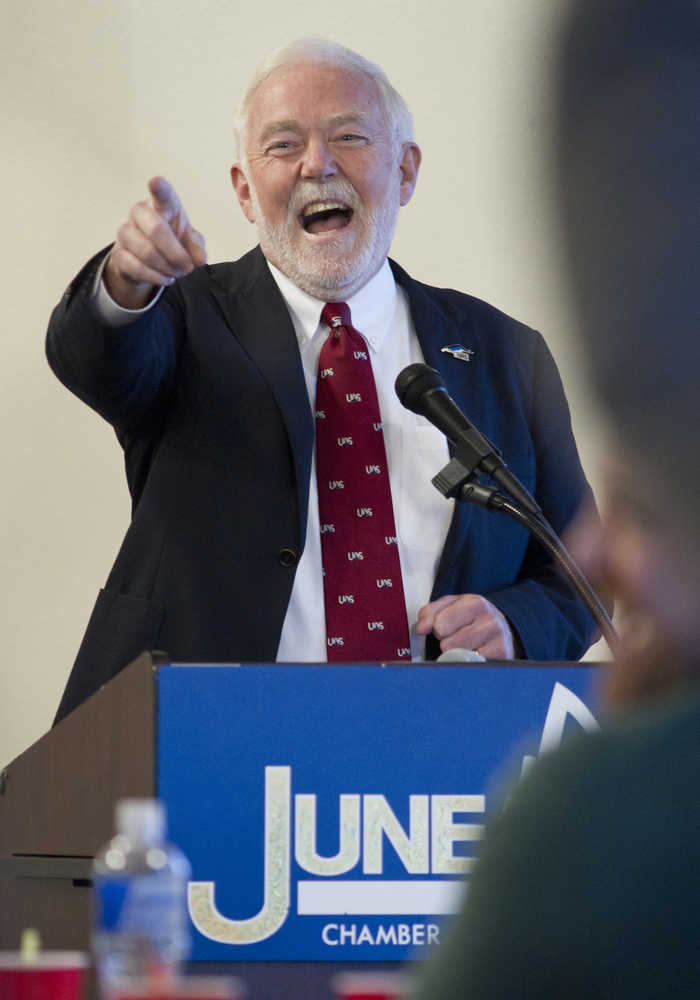The University of Alaska system is continuing its drive to consolidate instruction and administration as part of a cost-cutting drive, the Juneau Chamber of Commerce was told at its weekly luncheon.
The week’s featured speaker was University of Alaska Southeast chancellor Rick Caulfield, who said at the Juneau Moose Lodge that the university is “looking at all of our academic programs and all of our administrative programs,” no different “from any other part of state government.”
With Alaska facing severe budget problems because of low oil prices, government services are being cut across the board.
“About half our budget, about $25 million, comes from state general funds,” Caulfield said, adding that proportion is high by American standards.
For its part, the university system has embarked on what it calls “Strategic Pathways,” a program of cuts and consolidation.
Under the plan, each part of the university system — Southeast, Anchorage and Fairbanks — will become a specialist in a few particular fields.
For UAS, that might include teacher training, fisheries and ocean sciences, or Alaska Native studies and Northwest Coast art.
“We are convinced that we can grow the number of Southeast Alaska students who are enrolled in … a fisheries degree program,” Caulfield said.
In the spring, UAS plans to ask the university system’s board of regents for permission to specialize in that area. Strategic Pathways as a whole is expected to be rolled out during 2017 and 2018.
In response to a question from Bruce Abel, Caulfield said UAS has a 57 percent graduation rate for “first-time, full-time graduates,” and he admits that is “lower than what you’ll see in most numbers,” but UAS also functions as a community college and has large numbers of nontraditional students — people who also work full-time, are raising families, or take longer than four years to get a degree.
“We know that the idea of just going off to college at 18 and finishing in four years … here, it’s a lot less common,” Caulfield said. “I always caution about trying to do too direct a comparison.”

